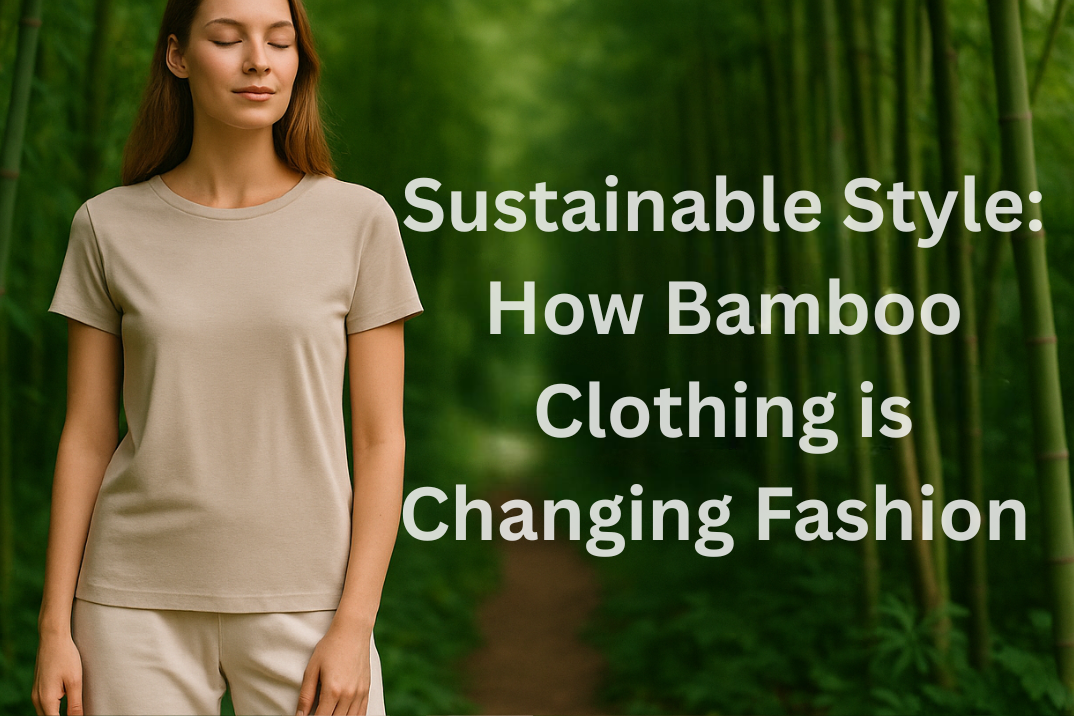
Sustainable Style: How Bamboo Clothing is Changing Fashion
Share
The Rise of Bamboo Fashion: Sustainable Style for Eco-Conscious Consumers
In a world increasingly aware of the environmental impact of our choices, the fashion industry is undergoing a significant transformation. Consumers are demanding more sustainable and ethical options, and innovative materials are stepping up to meet that demand. One such material making waves is bamboo. Bamboo fashion is rapidly gaining popularity, offering a stylish and eco-friendly alternative to traditional fabrics. This blog post delves into the rise of bamboo fashion, exploring its benefits, addressing common concerns, and highlighting why it's becoming a staple in the wardrobes of eco-conscious consumers.
What is Bamboo Fashion?
Bamboo fashion refers to clothing and accessories made from bamboo fibers. While the term might conjure images of stiff, scratchy material, modern bamboo fabrics are surprisingly soft, comfortable, and versatile. The process of creating bamboo fabric involves breaking down the bamboo plant into a pulp, which is then spun into yarn. This yarn can be woven or knitted into a variety of fabrics suitable for everything from t-shirts and underwear to dresses and activewear.
The Sustainability of Bamboo: A Green Choice
The primary appeal of bamboo fashion lies in its sustainability. Bamboo is a remarkably renewable resource with several environmental advantages:
- Rapid Growth: Bamboo is one of the fastest-growing plants on Earth. Some species can grow up to three feet per day, making it a quickly replenishable resource.
- Minimal Water Usage: Compared to cotton, bamboo requires significantly less water to grow. This is crucial in regions facing water scarcity.
- No Pesticides or Fertilizers: Bamboo is naturally resistant to pests and diseases, eliminating the need for harmful pesticides and fertilizers that can pollute the environment.
- Carbon Sequestration: Bamboo absorbs more carbon dioxide from the atmosphere than many other plants, contributing to carbon sequestration and mitigating climate change.
- Soil Health: Bamboo's extensive root system helps prevent soil erosion and improves soil health.
However, it's important to note that the sustainability of bamboo fashion depends on the processing method used to create the fabric. The most common method, the viscose process, involves the use of chemicals. However, closed-loop systems are being implemented to minimize waste and recycle these chemicals. More sustainable methods, such as using mechanical processes to create bamboo linen, are also gaining traction.
Benefits of Bamboo Clothing
Beyond its environmental advantages, bamboo clothing offers several benefits for the wearer:
- Softness and Comfort: Bamboo fabric is incredibly soft and smooth, often compared to silk or cashmere. It drapes beautifully and feels luxurious against the skin.
- Breathability: Bamboo fibers are naturally breathable, allowing air to circulate and keeping you cool and comfortable, even in warm weather.
- Moisture-Wicking: Bamboo fabric excels at wicking moisture away from the skin, helping to keep you dry and prevent odors. This makes it ideal for activewear and everyday wear.
- Antibacterial Properties: Bamboo possesses natural antibacterial properties, which can help inhibit the growth of odor-causing bacteria.
- UV Protection: Bamboo fabric offers some degree of UV protection, shielding your skin from harmful sun rays.
- Durability: Bamboo clothing is surprisingly durable and can withstand regular washing and wear.

- Image of a person wearing stylish bamboo clothing, showcasing its versatility and comfort.
Addressing Concerns About Bamboo Processing
As mentioned earlier, the processing of bamboo into fabric can raise environmental concerns. The viscose process, while widely used, involves the use of chemicals like carbon disulfide. However, responsible manufacturers are adopting closed-loop systems to minimize the environmental impact. These systems recycle the chemicals used in the process, preventing them from being released into the environment. Look for certifications like OEKO-TEX Standard 100, which ensures that the fabric has been tested for harmful substances.
Furthermore, the development of alternative processing methods, such as mechanical processing to create bamboo linen, offers a more sustainable option. While bamboo linen is not as soft as bamboo viscose, it is a more environmentally friendly choice.
How to Choose Sustainable Bamboo Fashion
When shopping for bamboo fashion, consider the following tips to ensure you're making a sustainable choice:
- Look for Certifications: Check for certifications like OEKO-TEX Standard 100, which indicates that the fabric has been tested for harmful substances.
- Research the Brand: Investigate the brand's sustainability practices. Do they use closed-loop systems for processing? Are they transparent about their supply chain?
- Consider the Fabric Type: Bamboo linen is a more sustainable option than bamboo viscose, although it may not be as soft.
- Choose Quality Over Quantity: Invest in well-made bamboo clothing that will last longer, reducing the need for frequent replacements.
- Care for Your Clothes Properly: Follow the care instructions on the garment label to prolong the life of your bamboo clothing.
The Future of Bamboo Fashion
Bamboo fashion is poised for continued growth as consumers increasingly prioritize sustainability. With ongoing innovation in processing methods and a growing awareness of its benefits, bamboo is becoming a mainstream fabric choice. As more brands embrace bamboo and consumers demand eco-friendly options, the future of bamboo fashion looks bright.
By choosing bamboo fashion, you can make a positive impact on the environment while enjoying stylish, comfortable, and durable clothing. It's a win-win for both your wardrobe and the planet.
